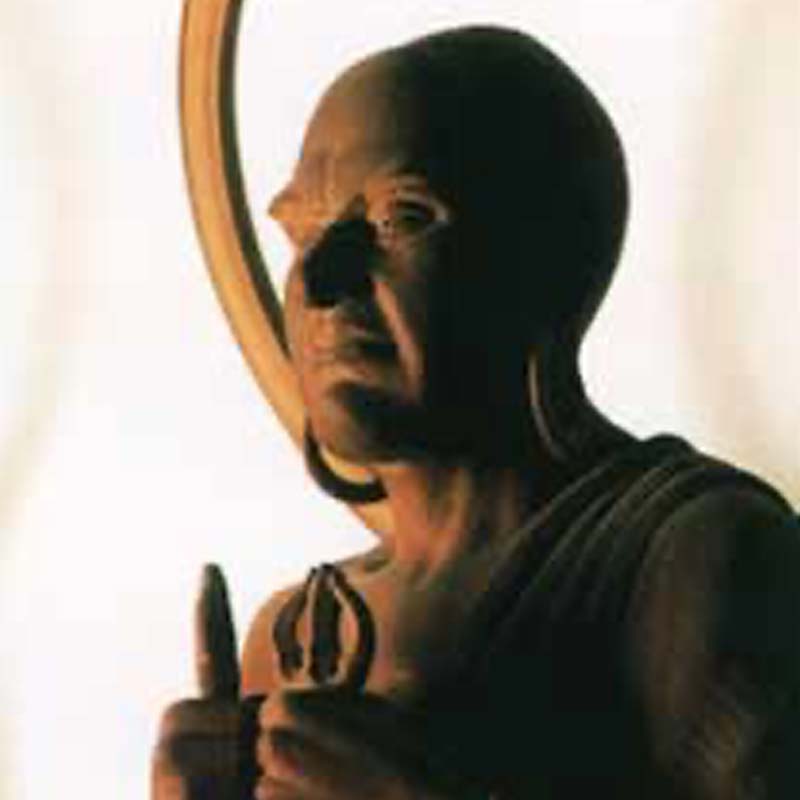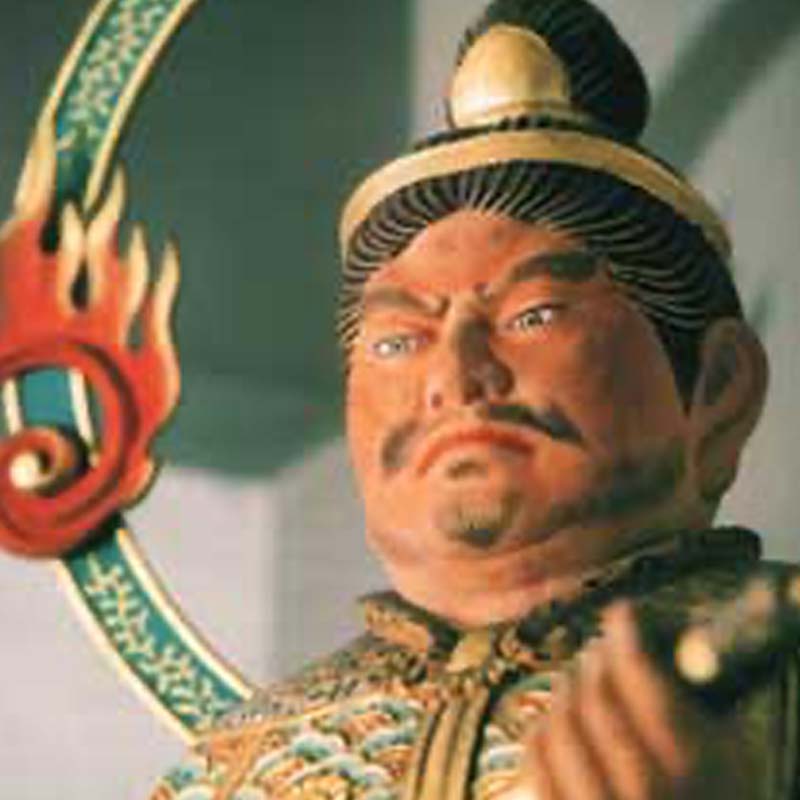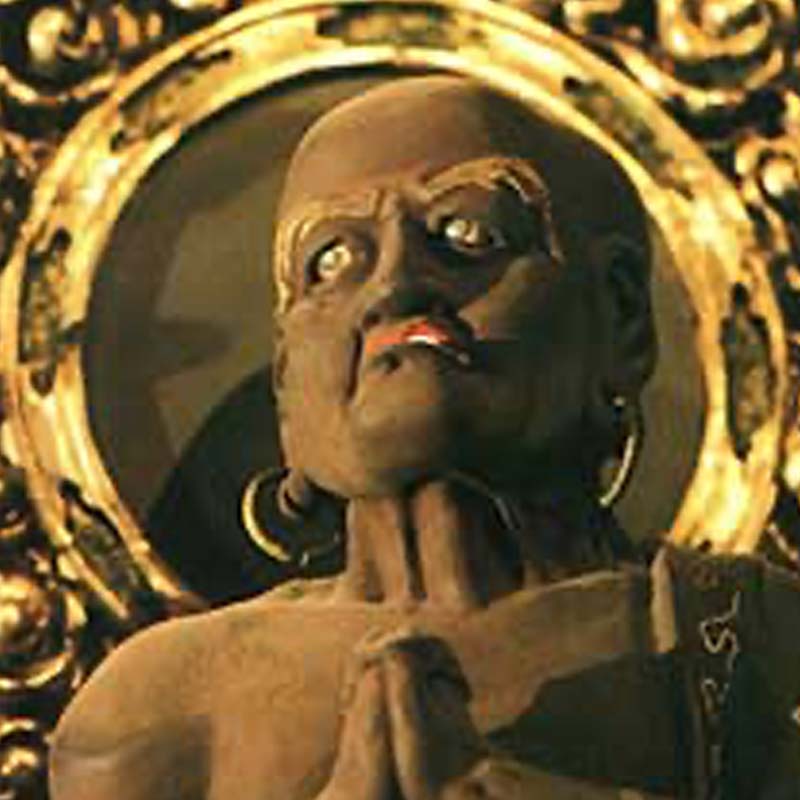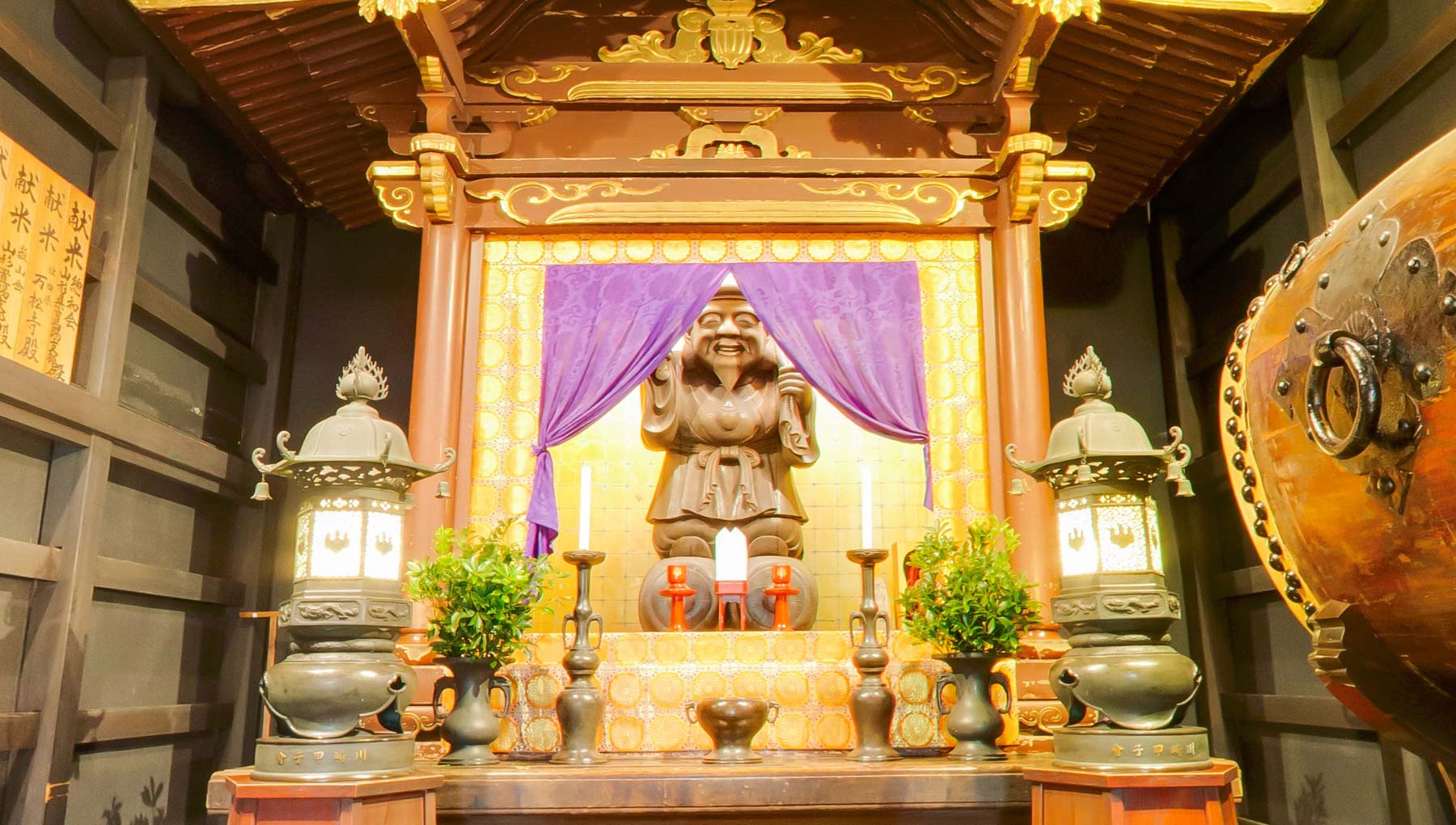16 Arhats

Arhat is a Saint who has enlightenment and the 16 arhats that were disciples of Buddha remained in this world for a long time to spread the teaching of Buddha.
In China the religion of Arhat flourished from the Tang dynasty period for hundreds of years. Especially at Zen Buddhism temples, there are usually 16 or 500 arhats enshrined on top of the temple gate to protect the teaching of Buddha and continuous training of Buddhism.
After the Kamakura era, the belief spread all over Japan. Especially in the Soto Zen Buddhism, founder Zen Master Dogen published “Ahrats Service Manual (Rakankuyō-koshiki-mon)” and till now “Rakan Kōshiki (service to cure Arhats spirits) is considered an important service”.
Virupaksa (Kōmokuten) / One of the Four Devas (Shitennō)

The Lightening Bodhisattva (Hōkō Bosatsu) and Kshitigarbha are enshrined inside the huge gate on the upper floor, the Four Devas and 16 Arhats surround it.
In Buddhism, the Four Devas are working for Sakra devanam Indra (Taishakuten) at the Mt Shumisen in Buddhist world. Their job is to defend the teaching of Buddhism at the middle of the mountain. The Deva protect each direction, East Dhrtarastra (Jikokuten), south Virudhaka (Zōchōten), west Virupaksa (Kōmokuten) and north Vaisravana (Tamonten) .
In Japan they were believed in from the very early period around A.D. 700 (Hakuhō era) and many statues were made at that time. Generally they are armored and stepping on a demon.
Mahā-ka-śyapa (Kashō sonja)

In the Buddha hall (Butusden) which is located at the center of the 7 halls, a Buddha statue is enshrined in the center of a stage with 2 flanking attendants, one Mahā-ka-śyapa(Kashō sonja) on the right and Ānanda on the left, generally called the “3 Buddhas”.
Mahā-ka-śyapa was raised in Brahman, India and he became one of Buddha’s 10 great disciples. He had the most severe training to abandon his desire for eating, clothing and living (Zudagyō) and was called Zuda Saint. After Buddha passed away, he became the top of the teaching elder and gathered 500 leaders to hold a meeting (daiichi-kesshū) to compile the sermons Buddha had given everywhere and to teach the right Buddhism.
